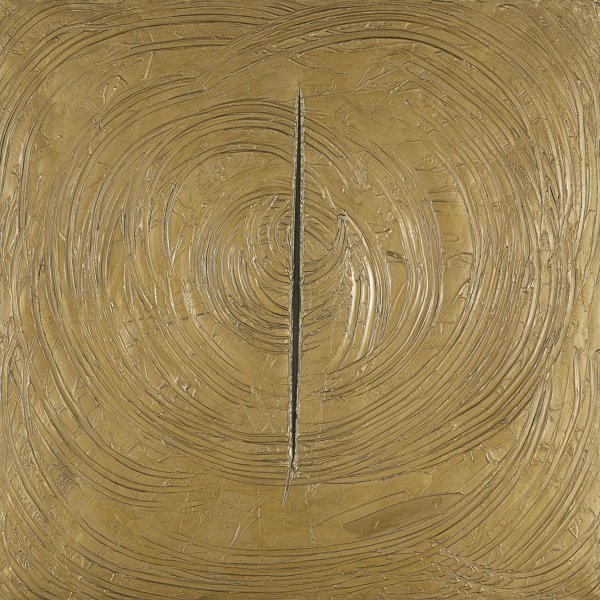Nude Turning Into a Dragonfly
1961
Oil and tempera on Cardboard.
160 x 183 cm
Museo Nacional Thyssen-Bornemisza, Madrid
Inv. no.
477
(1979.75
)
Not on display
Level 2
Permanent Collection
Level 1
Permanent Collection
Level 0
Carmen Thyssen Collection and Temporary exhibition rooms
Level -1
Temporary exhibition rooms, Conference room and EducaThyssen workshop
From 1959 to 1971 the Australian painter and sculptor Arthur Boyd lived in England, where in 1961 he painted the present Nude Turning into a Dragonfly belonging to the Museo Thyssen-Bornemisza collection, which was among the works shown in the retrospective exhibition organised by the Whitechapel Gallery in London in 1962. From amid a leafy forest emerges a female figure flying over a stream, while beginning to metamorphose into a monumental dragonfly. Both the head and the arms, which end in huge hands, remain unchanged, whereas the legs have already been transformed into translucent wings. This transmutation, infused with magic and dream symbols and references to classical mythology, is viewed by Franz Philipp as a metaphor with sexual connotations.
On his arrival in London, Boyd’s new interest in the idea of metamorphosis altered his style and ushered in a new period of paintings with heroic and epic overtones which characterise his output during those years. The themes of love and death, often containing erotic symbols, stem from the influence of northern European Romantic painting, German Expressionism and Surrealism. The mark of the oneiric figures of Marc Chagall is particularly present, as can be clearly seen from the latter’s Bride Turning into a Windmill executed in 1960, which displays an undeniable link with the painting in the Thyssen-Bornemisza collection. Similarly, when Boyd arrived in Europe his technique became more painterly and more Expressionistic, as evidenced by the present work. Boyd uses mixed media, oil and tempera, applied in loose brushstrokes and very heavy impasto which he models with his hands in some areas — perhaps because he was accustomed to handling clay in his sculptures and ceramics.
Paloma Alarcó
On his arrival in London, Boyd’s new interest in the idea of metamorphosis altered his style and ushered in a new period of paintings with heroic and epic overtones which characterise his output during those years. The themes of love and death, often containing erotic symbols, stem from the influence of northern European Romantic painting, German Expressionism and Surrealism. The mark of the oneiric figures of Marc Chagall is particularly present, as can be clearly seen from the latter’s Bride Turning into a Windmill executed in 1960, which displays an undeniable link with the painting in the Thyssen-Bornemisza collection. Similarly, when Boyd arrived in Europe his technique became more painterly and more Expressionistic, as evidenced by the present work. Boyd uses mixed media, oil and tempera, applied in loose brushstrokes and very heavy impasto which he models with his hands in some areas — perhaps because he was accustomed to handling clay in his sculptures and ceramics.
Paloma Alarcó









